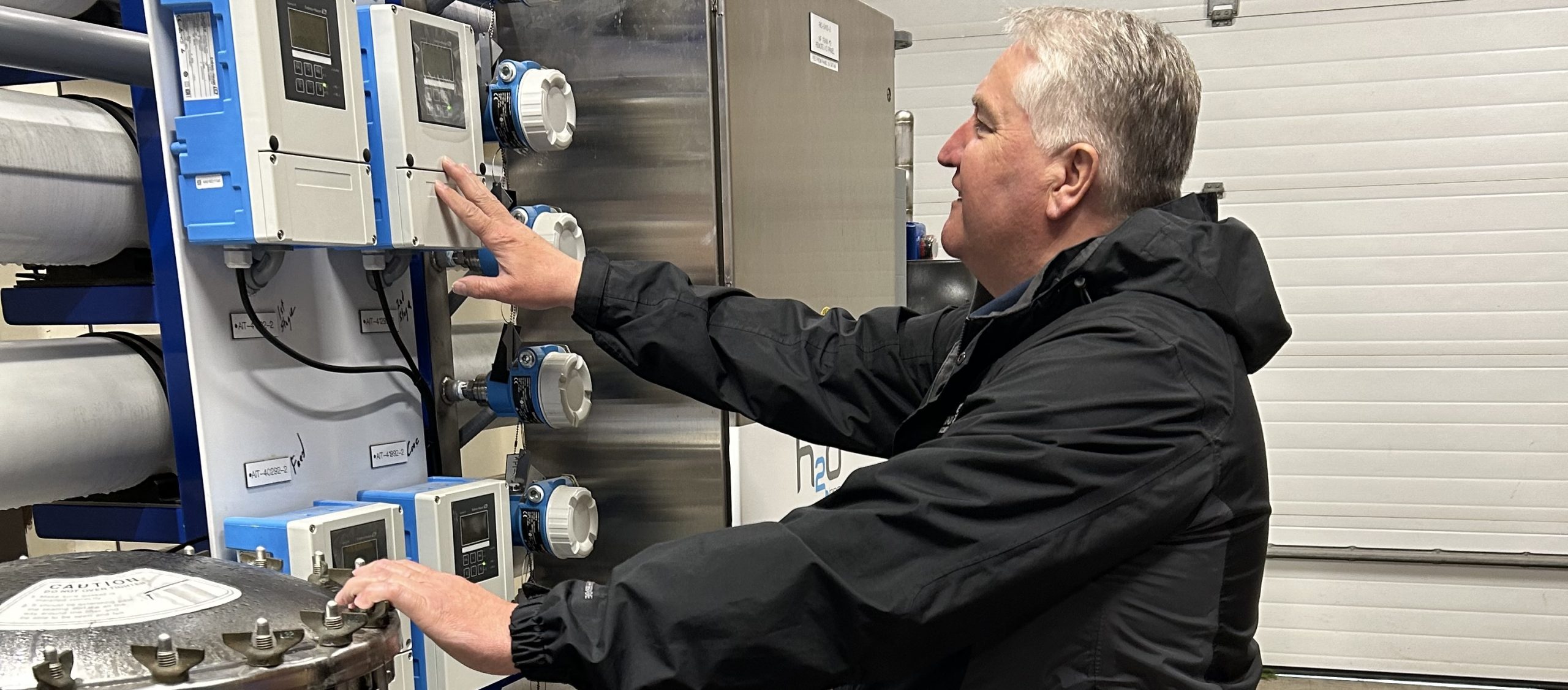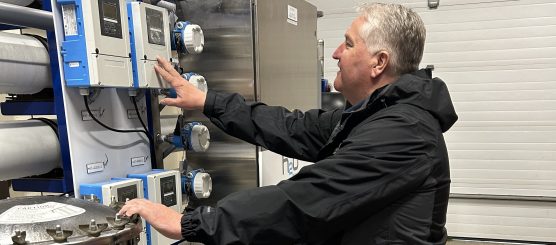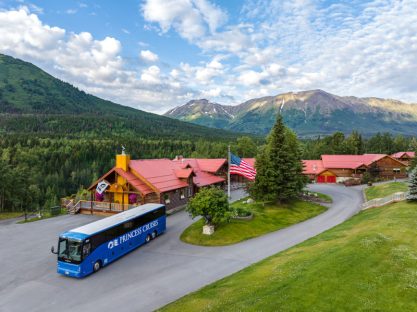Clean Water, Clear Mission: How Holland America Princess Land Operations Protects Alaska’s Pristine Waters

Deep within a computer room close to the beautiful Denali National Park, Weston Shreeve monitors the heartbeat of something most guests never see but absolutely depend on: the sophisticated water treatment systems that keep Alaska’s wilderness lodges sustainably operating while safeguarding the pristine environmental ecosystem that attracts visitors from around the globe.
For 20 years, Shreeve has been the guardian of clean water at Holland America Princess’s largest hotels in Alaska, Denali Princess Wilderness Lodge and Holland America Denali Lodge, where his mission extends far beyond simple utility management.
“My charge is simple,” Shreeve explains from his operations center. “I make clean water to protect the public, and I treat wastewater so that the environment is protected.” This commitment reflects Carnival Corporation’s “Every Drop Counts” water stewardship strategy to use less and reclaim more, reducing its impact and protecting the thriving communities and delicate ecosystems that depend on clean seas.
Shreeve arrived in Alaska in 1983 as a 20-year-old and eventually found his way to the water treatment industry. That career has sustained work spanning six different types of treatment systems across Alaska, with his expertise now extending beyond Denali to consulting roles at other Holland America Princess properties.
With three decades of treatment experience and an Alaska Department of Environmental Conservation recognition award, Shreeve transforms thousands of gallons of used water daily into clean water returned to Alaska’s glacial rivers. The advanced system protects the environment while keeping two premier wilderness destinations running smoothly for thousands of summer guests.
The Daily Surge Challenge
The scale of Shreeve’s operation in Denali becomes apparent when you consider the rhythm of tourism in Alaska. Starting in the early morning hours, hundreds of guests and employees wake up, shower and prepare for their wilderness adventures. Then, in the evening, everyone returns from day tours, bringing another peak in water usage that might overwhelm most treatment systems.
“About a third of our used water comes in the morning, and another third comes in the evening,” Shreeve notes. “We have to flatten out how it flows through our water-treatment system because the active microbes that organically purify the used water love the same amount of food every minute of every day.”
Computer-controlled systems now average out these dramatic surges, ensuring that instead of overwhelming peaks and valleys, the treatment plants receive a steady flow throughout the day.
Advanced Water Treatment Technology
The land-based water treatment mirrors the advanced wastewater treatment systems deployed across Carnival Corporation’s fleet of ships, using the same membrane bioreactor technology that’s part of the company’s “Every Drop Counts” strategy. Whether at sea or in Alaska’s wilderness, the process further purifies the water to municipal water quality or better before releasing it back to nature.
The technology works through four key stages: filtering to remove debris; biological treatment using microorganisms to organically remove impurities; advanced membrane filtration; and ultraviolet light treatment. At the heart of the process are thousands of tightly packed membrane fibers that Shreeve describes as looking like “a dense web of spaghetti noodles that are eight feet long.”
“Each of those little strings will let about a gallon and a half a day of water go through,” he explains. “When it lets the water go through, it won’t let microbes or anything like that pass through microscopic-sized openings.”
The results speak for themselves. Water leaving Holland America Princess’s treatment facilities consistently meets or exceeds all state and federal requirements.
In a region where glacial silt can make rivers look muddy and wildlife naturally contributes biological contaminants, the treated water can even represent higher levels of purity than natural flows. The crystal-clear water flows back into the Nenana River, which winds around the Holland America Princess properties.
Stewardship in Action
While Alaska’s abundant water resources mean that conservation takes a different form than in drought-prone regions across the United States, Shreeve’s operation maintains strict oversight of water usage. Daily meter readings across all properties catch any potential leaks early, preventing costly water waste and potential infrastructure damage that could disrupt guest experiences.
Shreeve’s Alaska operation is just one piece of Carnival Corporation’s “Every Drop Counts” success story. Thanks to the company’s water conservation efforts, its fleet uses almost 40% less water onboard per person per day vs. on land – or over 4 billion fewer gallons of water.* Beyond reducing water use overall, the company sustainably sources nearly 90% of the freshwater used on board its ships from the sea itself thanks to advanced desalination systems. The self-sufficient water production systems help preserve other freshwater sources for the people and places that depend on them.
As Shreeve monitors his systems from that room in Denali, he’s not just managing utilities; he’s protecting a legacy. Every gallon of crystal-clear water that rejoins the Nenana River represents a commitment to protecting Alaska’s unspoiled wilderness for future generations of guests to discover.
Operations like Shreeve’s prove that with the right technology, expertise and commitment, visitors can experience Alaska’s majesty while leaving minimal environmental impact.
*Carnival Corporation’s water use rate is 51 gallons per person per day, which is almost 40% less than the U.S. national average of 82 gallons per person per day. Source: United States Environmental Protection Agency.



